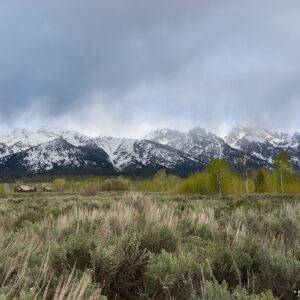Hans Christian Andersen fairytales
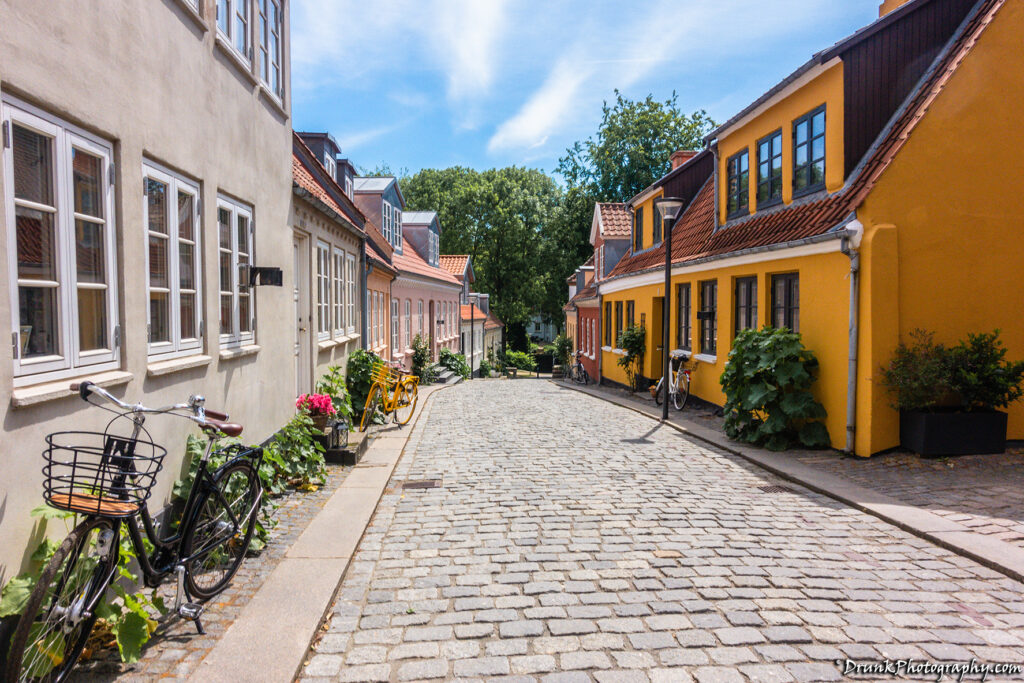
Paaskestræde: Fairytale street
Papirbåden | H.C. Andersen
Vaskepladsen, 5000 Odense, Denmark
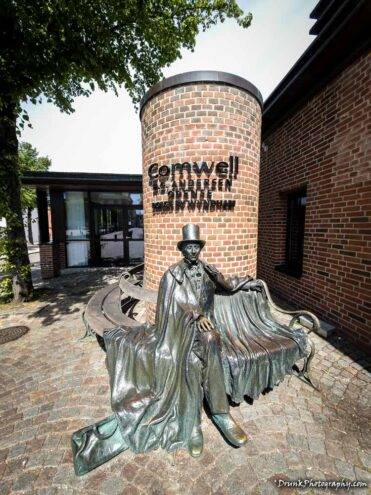
Happy Pride Month to you. When I was in boarding school, we used to have some really interesting classes. One of the classes I most loved, besides science and math of course, was Anthropology. I think this course really shaped who I came to be, as a human being, because that course exposed me to many works by authors around the world, new and old, and forced me to expand my limited, hood-based ways of thinking- which was to be ready to protect myself and war at all times, because everyone was against me, especially if they looked like me. When we grow up, we don’t realize how so much of what we see, as children, help alter our perceptions of life, and I’m sure most people don’t really even think about this, even though we have so many helicopter parents, baby mamas and deadbeat dads out there today, not to mention all these bastard babies who grow up to do all the crime out there. America has a huge problem with Anthropology, and the lack of understanding/teaching of it, which should be core to child rearing, but is not. For example, when I asked many people about whether they took any courses on Anthropology, in high school or college, most have never had such a course. Often, what they would mistake for Anthropology was actually just sociology, and when you mention Anthropology, may reduce it to Archaeological studies, which can also, be a part of it, but is not mainly what’s covered. When you take such a course, you learn how humans are behaviorally shaped, how we are socialized, whether that be via archaeology, cultural traits, biology, linguistics, etc. but over the history of being; meanwhile, sociology mainly just looking at human development, attitudes, culture, social structure, etc. at a studied point in time. They’re not the same subjects at all and I found sociology to be rather boring. How we, humans, act, and human evolutionary biology, that always intrigued me, which made my anthropology courses that much more entertaining, as the teachers would force me to think from different angles, understand mentalities, think before passing judgement, collect/compare and analyze evidence before popping off on something, and a course like that was perfect for the most analytical of us. I had about 2 semesters of this, in my time in school, and in both, we analyzed many fairy tales throughout history, many dating back to the 1800s, and after noticing how important companies like Disney have become in our society, I can see how important it was to have those Anthropology courses because those fairy tales shape our behavior, many of which do that through cautionary tales. Even culturally, many cultures carry down fables with cautionary tales, to teach kids not to do bad, you can find works from master of this, such as Charles Dickens and Hans Christian Andersen, although, most Americans probably couldn’t tell you more than 2 works by either author. They also don’t know something I learned in those courses, about Andersen, that were really funny and give huge context to Andersen that is not known by many, because they only know the highlights and great stories from Denmark, of their treasured hero. Andersen was a walking fairytale, for good or bad, and he did some really suspicious stuff, in his time, that I remember one teacher pointing out, about his time with Dickens, which basically says all you need to know about the real-life character of Andersen, and explains how he was so gifted at writing his stories, as he was his stories, literally. Not growing up with a father, after the age of 11, took its toll on him as he acted (then) like many boys in today’s society do! I made a joke about that, during a tour that mentioned Hans Christian Andersen and it didn’t go over too well with the director and multiple people who hard it, because they didn’t want to tarnish his image, but the joke was really funny to a guy from Boston who heard it and agreed. Let’s slow walk the legend down, and you’ll see what I mean, because I’m not sure many know the man behind so many classic tales, and many don’t know him at all.

We heard so many of life’s lessons, in the form of children’s stories and nursery rhymes and such, all throughout our time growing up, and many people don’t stop to think WHY we do this at young ages, to kids. It’s because it is part of Anthropology, we shape the children with these tales we tell them and have them exposed to. That is how huge Anthropology is to us, as humans, but I’m sure many of you didn’t even think twice about how important such things are, and even less attention is paid to the people who created most of these children’s’ stories that we expose the children too. What kind of children? Children of all races, ethnicities, religions, etc. because such fairy tales have existing in just about every culture that exists, or existed, as a fun way to teach kids hard lessons. People seem to thinks that modern day fairytales that they see from Disney, for instance, they think they all originated from Disney, when they did not! The overwhelming majority of child favorites we know of, in America, are not Disney created, they’re borrowed from the likes of authors such as Hans Christian Andersen, and we never research the authors, here in America, we just think “oh DISNEY”. Just WHO we let write these stories, or the stories behind the stories we give our kids to read, many never really peel back the onion to observe the authors, because the stories were so good and effective. In fact, if you did peel back the onion on some of the authors/creators of children’s material that came to love, you’d find that quite a few were psychotic or were possibly troubled human beings, like for instance how Walt Disney was a Nazi supporter, which doesn’t surprise one when they learn the racist origins of many of the cartoons and stories that shaped American people, and taught racism/racial stereotypes without people realizing. Disney was infamous for pushing race-based narratives that helped shape the mentalities of its citizens. I learned a lot of this stuff in the classes I took, but the majority of works I learned about, came from what authors were speaking about society, and their personalities, many instilling pride, overcoming obstacles to display courage and striving for success as their main themes in their writing. In the courses I took, one author constantly came up, and his work is still HUGE in today’s time, and people can’t understand why there is a big deal when attempts to alter this work is done, and it’s because some people understand that lessons were taught to children using such works, which folks feel are relevant to THEIR specific culture, so when you alter it, you’re offending them culturally. Sounds dumb, but when you think anthropologically, it does make sense that people would get pissed that someone tells a story and changes the character to a Black person, let’s say, and why there is almost always outrage when it’s done, using a white character from a wildly popular children’s story, such as “The Little Mermaid”. This particular issue is rather intriguing, because all of my Black female friends who introduced their daughters to the new Black version of The Little Mermaid – so happy they didn’t call it “Lil Mermaid”- didn’t even know that Hans Christian Andersen wrote that tale. So they made this whole racism claim about the movie, backed it with all their hearts, but were ALL ignorant to the fact that the author was not the Disney corporation, but the Danish famous writer, Hans Christian Andersen. I began to tell them the story of Hans Christian Andersen, which I’m sharing in this piece below, and then asked these ladies to evaluate how they feel about his work, after knowing the things I shared about him – which they immediately went to fact check. They were CONFUSED, they didn’t know what to think, after learning about his back story and lifestyle he lived, but they surely weren’t talking that racism stuff after. 🤣
If you’re unfamiliar with the controversy surrounding Hans Christian Andersen’s “The Little Mermaid”, well the West (White people) are pissed that the main character is a Black girl entertainer, Haley Bailey, in the role of the recent Disney version of The Little Mermaid. An overwhelming majority of people do NOT appreciate the race swapping done in this recent version and I knew when it was announced as part of the marketing that there was going to be hell to pay for putting the Black girl in the role as the traditionally white character, Ariel. We see it soooo much and yes, before you get all liberal, White people are MAD that they put a Black in that role! Why? It’s a part of the older generations’ upbringings, they were raised to it, it’s part of THEIR Anthropology, and they don’t want it touched. This is a huge problem all over, not just with Blacks being used in roles of traditionally white people role, because Pedro Pascual hates that people don’t like race swapping of characters, after he, a Chilean foreigner, didn’t know the REAL AMERICA that Black people already knew. Welcome to America, Buddy. 🤣 Same thing for how Idris Elba, who complained that he keeps being seen as a Black person and getting all the work he gets because he’s a Black, got mad when the real UK and American whites showed him “YOU ARE NOT US (WHITES)“, despite his British accent elevating him above American Blacks in their eyes- only to now find they reject him as a candidate for playing James Bond, another traditionally white character, because he is Black. 🤡 Now, he got his Negro Wake Up Call, and today he is so mad he took himself out of all discussions to play James Bond. 👏🏼 The white people of ‘The West‘ will teach you a lesson quick with racism, and show you that they think you’re an inferior race, in some of the most darling ways, especially if you touch their white characters! 🤣 Listen, there are a few golden rules, 1, death is certain you can’t avoid it to stop trying, 2, Michael Keaton is the best Batman, and 3, don’t ever replace white fictional white characters with clearly non-White human actors. White people can white wash your non-white characters and productions like they do to Asians all the time, that’s acceptable (market research shows that Asians wish they were white so it’s acceptable), but you better not come do that to their characters. Hell, in Japan, they wished Black people were white too, over there, like they did to Naomi Osaka. 🤦🏽♀️ They make her a white person, that is NUTS, so bad that the company removed it from Youtube, but you can’t stop youtube from copying it to another page so here it is. Whitewashing nobody complains about, but when you … COLOR-WASH? WHAT DO YOU CALL THIS? the character, then suddenly all these people throw a hissy fit, despite a long history of Blackface- and Asians are notorious for doing Blackface, all over the Orient. So while those examples are offensive to the people being mocked, if a non white plays the role of a white fictional character, many people see it as you’re doing WHITE FACE to them and ruining their history. 😳 Except it’s NOT in this case, of The Little Mermaid because nobody is pretending to be white, Bailey is just being a human, who happens to be Black. Big difference, but people don’t see it that way, that’s how the double standard works. These people want to raise their kids with the lessons their culture taught them, Anthropology is more serious that most people know, which is why people hate that Disney is being so LGBTQ+ friendly- although, those same angry parents are probably too dumb to go look up some of those authors, such as Hans Christian Andersen, who was very queer/homosexual, and it was well documented. Well, that’s important because Hans Christian Andersen is the original author of The Little Mermaid, and like many of his works, he borrows from his own feelings to tell the stories that have become immortalized and cemented in cultures around the world. So, if you’re so anti LBGTQ+, you may want to dial it down a gram because your little princess is fantasizing the story a gay man wrote, and envisioned himself as. I doubt they’ll cancel his works though but there is a lot about his personal character, that highlighted a lot of struggle at his time, and that made his self-reflective life and social commentary that much more interesting, in the form of the works he wrote. It also shows that anthropology being what it is, many different people could stand to learn from what he produced, as it was highly relatable even though he internalized the writings of a gay man in the form of stories that were not just children’s stories. So, before you cry about a Black girl playing that role as Little Mermaid, examine how you feel about your daughter internalizing the same as Hans Christian Andersen – and yes, the hate is mostly from the same audience that hates Blacks and LGBTQ+ both. 🤣
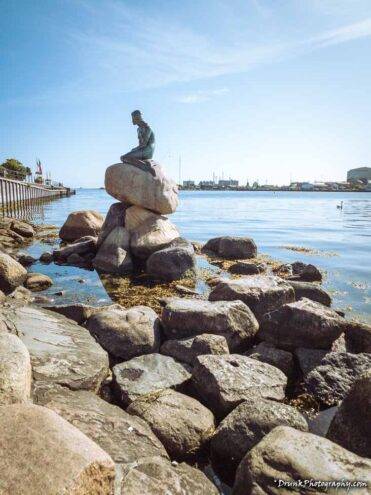
I had many arguments about this Black girl playing the role of Ariel, in The Little Mermaid, and they said it’s ok if a Black is in any other role, and said it was ok for the Jamaican crab to sing slave songs in the original Disney cartoon adaption of the story, but it was not acceptable for a Black to be Ariel. When I informed one Black woman that Hans Christian Andersen was queer, she vehemently objected- then I showed her the info highlighting this, and how Hans Christian Andersen drew a lot of criticism, back in the days, for his lifestyle. This lady was devastated that such a man told the best tales we even know of today, even if some of them are adaptations from earlier works by other people/cultures. I showed her how he wrote about his mother in a way similar to a beta male, aka mama’s boy, in some of this work too, and she was ready to blow her brain out. I also let her know that the world over had already heard similar tales, it’s not just white cultures, so many were borrow from non-white cultures. Many modern children’s stories that we know of today are mostly lifted from somewhere in Europe or Asia, mainly, many dating back to 1800s, but certainly many from centuries earlier- just less complex in story telling style. I pointed out that the offensive Black character “Lil Sambo” is actually from a children’s story in INDIA, clearly referencing Indian-based things, called “The Story of Little Black Sambo“, from 1899, written by a white lady (Helen Bannerman), to her HALF INDIAN two white girls. It was NOT an American creation, but it turned into a racist creation when it came to USA. The error was Bannerman clearly used Sambo which was a racist term for Blacks the world over, and that term did not exist in Indian languages, so she was clearly doing racist “pickaninny” Westernized hatred depictions of Blacks here, which always had stories of Black boys getting themsevles into danger because they invite it to happen to them. Blacks were in many children’s cautionary tales, as dirty slavey type characters for white people to enjoy, but a Black can’t be in a hero tale like The Little Mermaid? Judy Garland could dress up and a pickaninny Black in blackface, that was ok, to tell stories with Black characters who were not Black people, to their kids and adults, but a real Black can’t be in a cartoon in modern times? Check here for old, racist Jim Crow depictions of Black people, for white people’s children’s’ enjoyment. Folks take their Anthropology seriously, like I mentioned back when I spoke about how Americans didn’t even know about the story of Anne of Green Gables, which is huge in Europe and Canada, but they did know about “Annie”, a completely different story which Blacks also went and remixed, much to the same chagrin, that also caught racial controversy for placing a Black girl as the core character, just like we see again with The Little Mermaid. It’s why Europeans don’t believe that Americans are cultured at all, allowing their stories to be altered is not accepted in the rest of the West. These stories helped shape kids, culture, and taught a lot of lessons, so they take it personally, and it’s a little deeper than just calling people racists. The Little Mermaid came up a lot because I recently took a trip to Denmark, and a major selling point for this country to that Hans Christian Andersen is Danish and was born there. If you try to plan a trip to Denmark, you’d be hard pressed to find any advertisement that didn’t try to direct you to Hans Christian Andersen, his work, his childhood home, his childhood province he was raised in, The Little Mermaid statue in his honor, etc. Nods to Hans Christian Andersen was all over the place when I went, showing you how important his works were the culture, and the world because The Little Mermaid made him a global sensation, while his other popular work, The Emperor’s New Clothes, is a core story he clearly borrowed from cultures such as Spanish, Arabs and Jews stories that had the same exactly cautionary tales, tales of morality, tales of vanity, tales of spirituality, parables. The entire moral tale, theme and plot of Emperor’s New Clothes is identical in stories found in Spain (The Invisible Cloth) and other placed like Indian (The King and the Clever Girl) or Sri Lanka (The Invisible Silk Robe), and pre-date Hans Christian Andersen’s work from 1837, by centuries. It’s funny you hear people say “The Emperor Has No Clothes” when they incorrectly reference “The Emperor’s New Clothes”, although the originals that inspired Anderson were titled to reference the invisible clothing of the Emperor in the title. Andersen notably borrowed from that Spaniard version. He did an amazing job with his version of The Little Mermaid, and this is the most popular work he made. I never watched the original Disney because it’s not my cup of tea, but since I was going to the birth place of Hans Christian Andersen, I decided to see the Black version, and I didn’t think it was all that bad actually, but it was just MEH. After watching the movie though, I realized why the people were really mad, it’s because Disney went and race swapped both the protagonist AND the antagonist to non-white or not-traditional European (Javier Jardem is Spaniard but is facing what Pedro Pascual [Chilean] is facing). Yeah, you can’t DO THAT, the West responds unfavorably. Disney is trying to expand the reach of it’s product by doing inclusion to bring in more fans, on top of the existing fans of the story, but those existing fans want NOTHING of it and let Haley know directly with their racism. These are childhood fairytales, not real people, but the last thing many parents want is for their kids to wish to be like a Black little girl, so they boycotted the movie. 🤷🏽 Well, nobody cares what hateful racists have to say, because the impact that this Black version of The Little Mermaid did, it’s priceless. You can watch this video and observe how powerful it is to see yourself reflected in a positive manner, and see how powerful it is to these little Black girls. You may cry watching that, because we barely see ourselves in characters that are relatable and identifiable with us and that leads to Black self hatred we already knew since the original DOLL TEST (look at who they see as pretty, ugly, good and bad), because white supremacy is so strong that lack of inclusion leads to self hatred when it’s all around you in everything you see but you’re not represented. Personally, I think this is BS, because I personally know Black artists who make material for Black kids, but that’s not what Black mothers want to buy. They want to force people like Disney to make something, and that is acceptable only to them. There is already PLENTY of Black created material for Black girls, so that’s a self hatred problem too, that what’s done by Blacks for Blacks is not good enough for these Black mothers today. You shouldn’t need to beg and complain to white people, as a proud Black with culture, begging them for white validation or try to FORCE THEM to put you in their works of art, or force them to accept you so much that you twist their arms so they’re force to make Black characters, so THEY can teach YOUR Black kids to feel better about being Black, with their white writer’s room… when you live with YOUR kids and you’re Black so you could just… you know, get a Black husband and marry before you carry to create a strong Black fam… 🤔 …anyway, what do I know. 🤷🏽
On that trip to Denmark, people were really hyped to go the birthplace of Hans Christian Andersen and were serious about doing this too. People come from all over the world to go take photos with The Little Mermaid statue too. I know this to be true because I went to go see it, myself, and there were a thousand Chinese people forming a barrier around it, for 20 minutes and I could barely get in there to see it straight on. I even saw boats going by, getting close to the statue, for its passengers to take photos of The Little Mermaid statue. It’s a huge tourist attraction in Copenhagen, Denmark, and when I told anyone that I went to Copenhagen, the first thing out of their mouths was to ask me if I went to see the statue and they wanted to see photos of the statue. It was after visiting that statue that I had that talk with the person who was pissed that The Little Mermaid was a Black this year. She was so pissed that she ignored the fact that I’m Black, just to drive home the point so much that she disapproved of The Little Mermaid being Black, and that it was a major part of her childhood, so they couldn’t just go making changes like that because it negatively affects people- her being in her 70s. LOL It was part of her upbringing, it raised her, it taught her so many things about being a woman. I was surprised that everyone I met on my trip was well versed in Hans Christian Andersen’s work, and I never found that many people who knew of him, including people who watched and took their kids to see the original and new version of The Little Mermaid – and yes, I do ask people if they know who wrote these stories, and they all just say “Disney”. Americans are so quick to get mad when you change the lead characters of these stories, but they don’t even know anything about the authors. LOL. Hans Christian Andersen’s earlier work was rejected by his society, initially, they didn’t like his contributions to Anthropology, because they claimed it was too mouthy instead of being designed to educate children, as is expected in Anthropology. Danes got to him, so he delayed putting out his most important installment of his children’s stories, which included both works I mentioned earlier, The Little Mermaid and The Emperor’s New Clothes. Due to his backlash in Denmark, Hans Christian Andersen received high demand for his work in America, leading to work being published in USA that didn’t make it to Denmark until much later. As his works went worldwide, his success skyrocketed and rich people the world over put him on a high mantel, which was a big accomplishment because his family came from the poorest class in Denmark. All this praise from his contribution to white people’s Anthropology! When you understand how much of a big deal he was, with that background, you can understand the worldwide backlash from removing their white main character to have a Black girl as the main character that their kids learn morals from. 🤷🏽 Sounds really flagrant when you break it down. Newsflash though, after watching the Black girl version, that made me MORE curious to want to check out Odense, so technically, Disney’s marketing worked on me, thus drives more attention to Hans Christian Andersen’s work, in the end- thus this trip you’re reading about now. Racial identity politics hate didn’t scare me off either.
So, when I told that hateful lady that Hans Christian Andersen constantly had desired for other men, which he confided in a few people whilst telling them this, although publicly, he was never seen with anyone, not even a female interest, he also claimed he avoided sex in his public image, initially. Rumors is that when he used to hang with Charles Dickens, in England, he tried to come on to Dickens and got kicked out of Dickens’ home and told to never return. Dickens even refused to return letters written to him by Hans Christian Andersen, so, something really flagrant happened between them and neither spoke on it for others to know- only that we know that Hans Christian Andersen was surprised by Dickens cutting him off. They say because he was infatuated with Dickens and the same sex tendencies got exposes, leading Dickens to reject him, after having spent time together previous to their last encounter. What is more likely, is that Andersen was a stan of Dickens, to the point where Andersen wrote those letters to him nonstop for 9 years!!! That was annoying likely, and Dickens unwittingly extended an invitation to him to stay at his house, which Andersen jumped on, although Dickens clearly didn’t mean for that offer to be accepted. Being socially inept, Andersen just did weirdo things around Dickens, even having a homo erotic moment or two like jumping to Dickens to walk locking arms together, man to man, although Dickens extended his arm for a nearby lady to accompany him. Weirdo gay things like this was being done by Andersen. Andersen was always crying outloud in a few embarrassing moments, one in at a play Dickens was lead in, and Queen Victoria attended. The other episode is Andersen crying like a grown baby on the lawn of Dickens, when he overstayed his welcome, and was consoled by the daughter of Dickens. These outbursts, and Dickens’ opinion of Andersen, is what led many to speculate the Uriah Heep is the childish 15-year-old idiot who came to stay with the Copperfield family in the tale “David Copperfield”. The mannerisms and body described seemed to mirror Andersen, so it’s widely believed that Dickens sneak-dissed Andersen there. Dickens dissed Andersen multiple times, such as the time he said “Hans Christian Andersen may perhaps be with us, but you won’t mind him—especially as he speaks no language but his own Danish, and is suspected of not even knowing that… He spoke French like Peter the Wild Boy and English like the Deaf and Dumb School.” Dickens was cruel after constant embarrassment hanging with Andersen and that sounds 100% more credible than some same sex story the LGBTQ+ blogs are telling. 🤣 Dickens had enough of his oddities and kept on dissing him, even after he left, poking fun at how Andersen overstayed his welcome when he put a note on the guestroom mirror “Hans Andersen slept in this room for five weeks—which seemed to the family AGES!” 🤣 And when Andersen realized he was not welcome anymore and had to leave, what did he do? Publicly cried some more and made a scene. 🤦🏾

Hans Christian Andersen did get exposed, publicly, for having homosexual tendencies through, because he had a relationship with a Duke, walking holding each other’s arms and doing a bunch of public displays of affection. When people got news of that lifestyle, they started to become very disgusted because they were thinking he was inspired by his homosexual lifestyle when writing those children’s books. The tale he wrote, entitled “Sneemanden”, translates to “The Snow Man”, and that one was the controversial homosexual overtones, which was accurately traced back to Hans Christian Andersen homosexual relationships. People flipped the hell out when they got wind of that. The funny thing is you may not have heard of that story, and instead heard of “Snedronningen”, which means “The Snow QUEEN”, an entirely different story that was made into many plays, movies and animated stories. This is properly the second most popular work, behind The Little Mermaid, that again most American have zero idea about. Of the people who know The Snow Queen, they don’t know that gay piece he wrote, The Snow Man, and it’s conveniently been overlooked by “polite society”, interesting enough- as the Snow Man falls in love with a “stove”- something that can destroy him if he entertains the idea of a relationship with. At first glance, it’s harmless and you don’t get what’s happening, but the reality is something much different. Many of those odd characters she spoke through, that’s all out of his strange life. There were many out of place things that Andersen did, which were based in many odd phobias he had such as a fear of dogs, didn’t eat pork because he feared parasites, he head a fear he would be buried alive, he kept long rope in his luggage so he could escape any fire by rappelling out of a window, to safety, using the rope and wrote a letter that he put next to himself while going to bed at night, to remind anyone who found him that he is sleeping and not actually dead so don’t bury him by mistake. They didn’t have the Internet, back then, so Dickens couldn’t have known that Danish people would let someone’s son shame an adult male, so Andersen asked Dickens if his son would shave Andersen, instead of Andersen shaving himself like men in England did! It was really suspect to Dickens. While in England, Andersen kept complaining about being scared of pickpockets out there. The guy was WEIRD so yes, I do believe the died a virgin. Him being socially awkward is what helped make such great characters and tales, he was always fantasizing about a better life or being something one couldn’t be in reality, it all came back to his own in efficiencies or challenges being so awkward as a cartoonish faced, lanky 6’1” person, at the time.
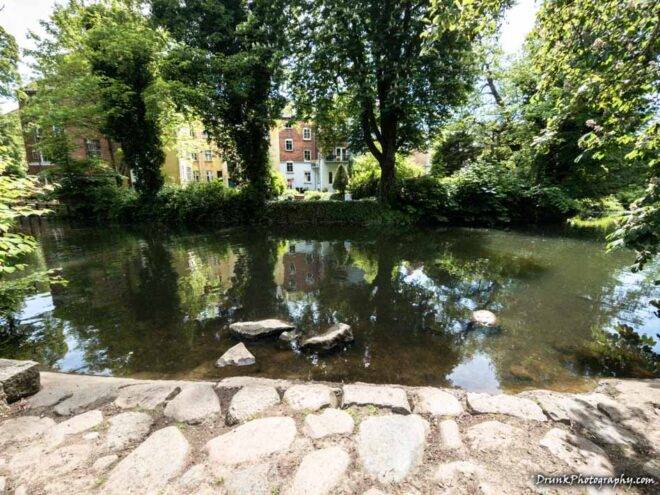
Other crazy characters may derive their origin from a headmaster that Andersen had in boarding school, who was a strict and demoralizing, often very negative in treatment of the students, and this personality tortured Andersen for years to come. Andersen was writing wild emotional tales such as “The Dying Child”, which was a child’s mental breakdown, which was inspired by the repression he faced at boarding school, which lead to him getting removed from boarding school, out of concern. As he rose in society, due to this works, he also compared people from richer classes to his own upbringing, and many of the criticisms found in some of his work comes from critiquing society at large, where pessimism started to enter his work. He always had controversial topics, but he was so direct in his writings that it was uncomfortable to most of the Danes, initially, because his style was not how others were writing, at the time. He was giving raw takes on life, derived from his conflicting life, and many thought he was mental, which is why many of his works were so emotionally powerful they brought adults to tears. Andersen mixed this with conquest by the understood, over the privileged, as a theme in many of his best works, and this formula proved to be the winning strategy we see in so much of the fairy tales and stories even today. This separated him from many writers of the time because he was taking stabs of society at the time of him writing his pieces, which have, ironically, lasted the test of time as these character flaws and highs exist with us all even today, which is why his works were essential for Anthropology studies. He, like Dickens, took at children, as the subjects of the main stories, and kids were often overlooked by adults, this is why they were often compared to each other, coming from that angle was very different from what all others were doing. Unfortunately, while Andersen was touring England, because he didn’t speak the English language as wished, he was not perceived as anything but a children’s book writer and was mistakenly described as one would describe Michael Jackson’s being like an adult-child. He did not like that Brits tried to reduce his works to only children’s stories, because the rest of Europe didn’t do that to his works, they treated his work as something for all ages, thus his success in Europe. At that time, his mannerism and way of acting would be very suspicious and men were expected to be stoic, but he was not that, mainly because he was raised by his mom after his father passed, so he picked up some of her ways and they stuck with him. He was very emotional, which was off-putting at times because he displayed so many feminine qualities, even as he moved into adulthood. He was a “mama’s boy”, he really loved his mom and she even made it into one of his writing “She was good for nothing” (hun duede ikke), highlighting her strife so well that Denmark has a memorial site recreated for how it looked at the time she would have been a clothes washer.
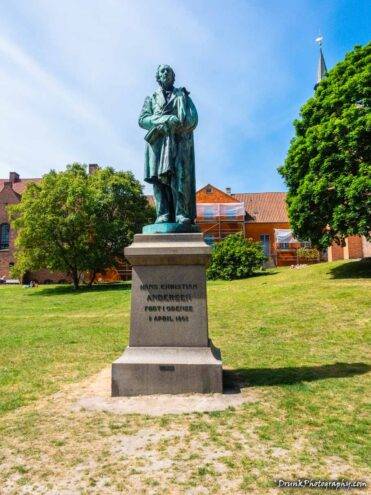
Another piece written by Hans Christian Andersen is The Ugly Duckling, something most people have heard of, but most don’t know he is the author of. Andersen is talking about himself in this work, although people look at it as a children’s story. It is true that Andersen’s work was for both children and adults, the themes were not childish, although the Brits cast that view. The most popular works of Andersen are mostly betraying, sadness or perseverance, so why anyone tried to reduce that to childish work, is nuts. It’s why he made grown people cry, or critiqued society that most of Europe made him popular, which is something only adults would understand, thus his work was written for all ages to enjoy. Anderson struggled with self-image issues and thought of himself as physically ugly without any swag, and he couldn’t get ladies. In fact, the only ladies people knew him to have possibly dated they friend zoned him. Most notable was that he had cravings mainly for men, who was a crime back in those days. That sexual repression was not initially examined and explored, by many reviewing his work, until more information came in about being sexually repressed in such a way. The more people inspected his work, and his relationships, they began to determine the that his lifestyle did have an impact on his works, and his mental state. Overcoming adversity is a theme because Andersen was born poor but died a rich and famous man. The Ugly Duckling is a telling of how he felt being so poor that his family shared 1 single room and lived hand to mouth, which got worse after his father died and the family had absolutely nothing. The rags to riches life is indeed a fairy tale that happened in real life for Andersen, but he was never comfortable with high society, despite them welcoming him due to his works making Denmark famous in Europe. He took shots at them in works like “The Flying Trunk”, where the household items are how he perceives high society people to be- annoying snoots. He even got a salary for life for his works, yet he couldn’t be who he wanted to be, because that was not socially acceptable, and he thought he was too hideous to date. He was highly conflicted and a self-defeatist when describing himself, this made for amazing children’s story themes which was not his original form of writing, and only by writing about how he truly felt did he finally propel himself to stardom, ditching the formulaic style of myth-telling that everyone else was doing when he first started off. He overcame a lot to get to become the legend he ended up being, including overcoming dyslexia- somewhat. Publishers spent a fortune on spell check for him, by hiring people to correct his bad spelling, so he overcame so much to become so accomplished, his story alone deserves strong movie or something. So, while he could not be himself, publicly, him being himself in writing is why we know of Hans Christian Andersen to this day. He is noted for saying that life is a fairy tale that God writes for you, and him writing what he left, for a larger audience, using his life’s experiences, is what made his writings so good that people regard him as the father of modern fairy tales storytelling, even over Charles Dickens! It is also interesting that most people don’t know that Andersen was a big travel blogger and published some of his fantasy trips to Sweden, Switzerland, Portugal and Spain most notably. I think he would fit in perfectly, on the Internet, today, if he were alive. Doesn’t sound that much different from many Internet-centered kids out here today, which is why his authentic work. His work was mainly derived from his personal life’s experiences, and being dorky, geeky, creepy, awkward, and socially inept, a guy who overcame poverty and was propelled to importance by the Royal Family of Denmark as a national treasure, translated into some of the best work we still copycat today. His real-life story of triumph, in the face of a lot of failure, is the best fairy tale ever told, except that was all real, which is why he has the status he has in Denmark, and the world over- although, in today’s time, he’d be labeled an incel and dismissed, I’m just saying. If you decide to head to Odense, then you can go to this site to “follow in the footsteps” of Hans Christian Andersen, and there are painted footsteps in the cobblestones in the area, to let you know where you should walk to see the things related to celebrating him. You can download the app and get extra insight, as I did, using that link. Quite frankly, given what I learned of Hans Christian Andersen, if his story resonated with Black people, as it did with many others. I think he would be pleased, given his background and how sensitive he was, in his day to day, plus his trials and tribulations to overcome a lot of social adversity; thus, I can’t hate on this Black The Little Mermaid, although I generally hate the WOKE advertisement to promote such things because Disney definitely KNEW it would piss white people off, and outrage marketing is a big thing in The West. I’m just saying, it was important that it was made this way, based on those little girls’ reactions, even it if was a loss leader for Disney.
As always, the finished products can be found on the main site of www.drunkphotography.com.

